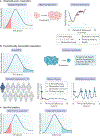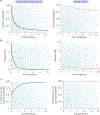Going to extremes: determinants of extraordinary response and survival in patients with cancer
- PMID: 31076661
- PMCID: PMC7255796
- DOI: 10.1038/s41568-019-0145-5
Going to extremes: determinants of extraordinary response and survival in patients with cancer
Abstract
Research into factors affecting treatment response or survival in patients with cancer frequently involves cohorts that span the most common range of clinical outcomes, as such patients are most readily available for study. However, attention has turned to highly unusual patients who have exceptionally favourable or atypically poor responses to treatment and/or overall survival, with the expectation that patients at the extremes may provide insights that could ultimately improve the outcome of individuals with more typical disease trajectories. While clinicians can often recount surprising patients whose clinical journey was very unusual, given known clinical characteristics and prognostic indicators, there is a lack of consensus among researchers on how best to define exceptional patients, and little has been proposed for the optimal design of studies to identify factors that dictate unusual outcome. In this Opinion article, we review different approaches to identifying exceptional patients with cancer and possible study designs to investigate extraordinary clinical outcomes. We discuss pitfalls with finding these rare patients, including challenges associated with accrual of patients across different treatment centres and time periods. We describe recent molecular and immunological factors that have been identified as contributing to unusual patient outcome and make recommendations for future studies on these intriguing patients.
Conflict of interest statement
Competing interests
The authors declare no competing interests.
Figures



References
-
- Bateson W The methods and scope of genetics: an inaugural lecture delivered 23 October 1908 An Inaugural Lecture Delivered 23 October 1908 edn, (Cambridge University Press, 1908).
-
- Weinberg RA The biology of cancer. Second edn, (Garland Science, 2014).
Publication types
MeSH terms
Grants and funding
LinkOut - more resources
Full Text Sources
Medical

